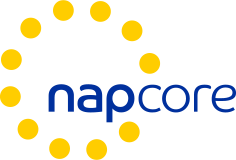
Material Hub
M3.1a Data content requirements, existing gaps, data dictionaries and supporting material (part a)
M3.1 – part a – includes a list of all data categories mentioned in the Annexes of the DRs and provides definitions and descriptions, referred to as the NAP data dictionary. This is considered a draft version of the data dictionary, and therefore the report also elaborates on the planned process to develop a stable version and guidelines for its future maintenance.
M3.1b Data content requirements, existing gaps, data dictionaries and supporting material (part b)
M3.1 – part b – provides an overview of all DRs to extract critical requirements for the operation of NAPs. It furthermore identifies gaps between current and required NAP implementations.
M3.2_First Report on NAP data availability_final
M3.3_Second Report on NAP data availability
M3.4 Third report on NAP data availability
This report provides information about the progress of NAP implementations across Europe and data availability in 2022 – 2023. It provides insight into the implemented data standards and other topics related to NAP design and operation. It serves as a knowledge centre and basis for achieving a harmonized NAP deployment and operation across Europe.
M3.5 Fourth report on NAP data availability
This report is divided into two main parts.
The first part serves as a user guideline for potential users of the NAP monitoring tool.
The second part summarizes the results of a NAPCORE survey conducted during latter half of 2023 using the developed tool.
Regarding data availability, the report reveals that static SSTP-related data are provided by the NAPs of 15 to 18 countries, while SRTI-related data, being dynamic, are available from the NAPs of 23 countries. Static RTTI-related data, particularly concerning the road network and roadside infrastructure, are accessible from the NAPs of 18 to 19 countries.
However, the availability of static MMTIS-related data varies across countries, with support for trip plan computation, existing trip plans, and auxiliary information being available from 8 to 19 countries.







